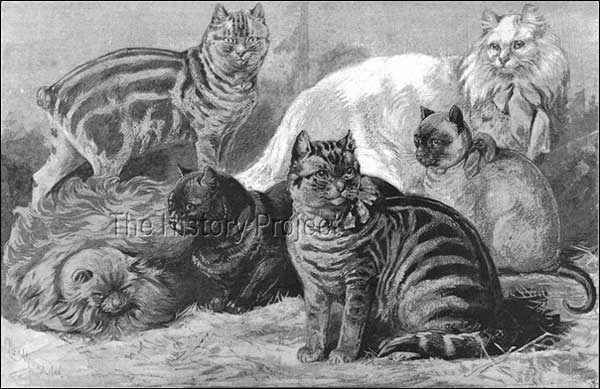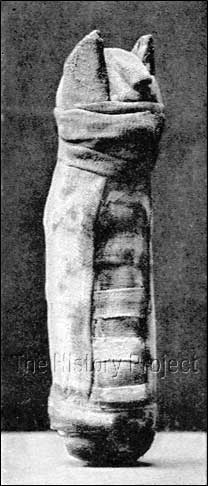 | ||||||||









|
FRANCES A. SIMPSON (1857-1926)SHOW MANAGEMENT AND JUDGING
It is unclear as to when Frances Simpson began running the Richmond Shows, but this was certainly one regular annual event, that she appears to have taken responsibility for. On Show management, the following adequately portrays the seriousness with which Miss Simpson undertook her duties: "Now to turn our attention to the management of shows, and upon this question I feel I am fairly competent to give an opinion, as I have acted as show manager and as show secretary to some of our largest exhibitions in London and at Brighton. The office is indeed no sinecure, and very few fanciers, exhibitors, or visitors have any idea of the enormous amount of forethought required, to say nothing of physical and secretarial labours, to make a big show run smoothly. The responsibility is also great, for a conscientious manager feels he has valuable live stock in his temporary possession, of which he has, so to speak, to render up account."1 Needless to say, although there were often complaints from exhibitors about the management of shows, or of the sanitary provisions for exhibits, often expressed openly in the regular 'catty' columns, Frances appears to have been a highly successful organiser, who was more than ready to listen to an proposal which would be of equal benefit to the exhibit, the exhibitor and the management committee. Her secretarial skills were also put to good use, both at a club and National level, where she would be called upon to be minute taker or acting secretary. She was clearly regarded as one of the 'old school', that is, a cat fancier of long experience, who by the late 1890's had earned a great deal of respect as a breeder, show organiser and then as a judge. By far her most notable secretarial position was as the Hon. Secretary of the Blue Persian Cat Society, when it was formed in 1901.
Not only do her writings indicate that she was a firm but fair-minded judge, but that she was a very willing mentor to other fanciers who sought to have a career in judging. She was also only too aware of unfair criticisms levelled at judges. In these next quotes we see her attitude towards the presentation of exhibits, her distinctly methodical thinking amplified in a short but succinct account of her judging mechanics, followed by a commentary about unfair criticism of judges and sage advice to new exhibitors! On exhibits prepared for judging:
"In the present day many of the specimens penned are so close together in point of breed merit that a very little turns the scale one way or the other. I have often said to myself, when judging a class of cats, 'This exhibit would be a winner but for its condition,' and I have had to put it down in the list. There is no doubt that with long-haired cats a fine full coat will cover a multitude of sins, but it cannot alter a long nose or poor shape and bad-coloured eye; and in urging the importance of condition, I at the same time deprecate the awarding of prizes to cats that have nothing to recommend them but their pelage. Seeing, therefore, that a handsome specimen may go to the wall for the lack of attention on the part of the owner, it behoves all cat fanciers and would-be exhibitors to do everything in their power to make their cats look their very best, so that their pets may be things of beauty in the show pen."1
On the mechanics of judging: "In judging a class, I go round and mark the absent cats; then I note down those that could not under any circumstances take a prize. If there is a large class- say, of twenty to thirty specimens - I mark off all poor or seedy looking cats until the number is reduced to about eight or ten; then I begin to search for the winners. At this point I take out each specimen, and if no judging pen is provided, I get someone to assist me, and by bringing out two cats at a time I can make comparisons and note down any remarks in my book for further reference. It often happens that one particular cat will stand out prominently from all the rest in a class, and then there is no difficulty about the first award. It is always well to give a 'reserve' and to distribute - but not too freely - the V.H.C., H.C., and C., cards.".... "A first prize cat should be a good specimen of its kind, and it is much better to withhold this award than to give it to a poor representative of his breed."1 On the criticisms of exhibitors: "It is hard when cat fanciers take to judging the judges and their judgements. A judge may be absolutely ignorant of the owners of the cats, and thus utterly unbiased; yet there will not be wanting those who will pick holes in their characters, and see in their awards clear proof of personal spite and party favour. The intense suspiciousness of some fanciers and the readiness with which they impute low motives to others is greatly to be deplored."1 And excellent advice to new breeders/exhibitors: "The cleverest fancier and most successful breeder can improve himself by observation and education. Do not be offended if you are told by those who have had a larger and longer experience in the fancy, and who are really experts, that you have made a mistake in any purchase. If you resent their criticisms, you may, and probably will, accumulate much rubbish as a monument to your own conceit. A great deal may be learnt from books, but more from observation. Above all, do not, when you have acquired some knowledge, form too high an estimate of your own powers and of your own cats; a true fancier is always ready - nay, anxious - to learn, well recognising that ignorance alone claims to be omniscient."1 << Back | 1 | 2 | 3 | 4 | 5 | 6 | 7 | 8 | 9 | 10 | Next >>
|
|||||||
Home | Cats | Gallery | Clubs | People | Artifacts | Articles | Updates | Contact Us ©The CFA Foundation, Inc and The Harrison Weir Collection
|
||||||||

